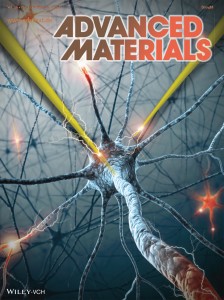Nuclear Engineering Graduate Student Seeks to Increase Diversity Among His Peers
by Luis Ocampo
On January 25, 1999, my hometown of Armenia, Colombia, suffered a very devastating earthquake which not only destroyed a large majority of the city but also led to chaos and looting. The latter caused my father’s business to be completely empty making that whole year very hard for all of us. Given the situation and how devastated the economy was, my parents decided to find a better life and give me a better future by moving to the United States.
Coming to the U.S. was incredible! I was 12 years old and everything seemed really amazing. I came during the winter, so seeing snow for the first time was very pretty and special. I started attending middle school immediately. In Colombia, I had to walk to school, so being picked up by the bus on the corner of the street in the U.S. felt like a luxury. My life changed dramatically with all the education opportunities. I moved out of the English as a Second Language program in six months and started high school like all the regular students. I was lucky that my high school had many after-school activities and even a radio station, so I decided to participate in everything.
I ended up at Penn State, thanks to the College of Engineering’s undergraduate recruitment initiatives. For example, I participated in a program called VIEW (Visit In Engineering Week) where I was given hands-on experience relating to engineering projects, design, and presentations. Part of that week included tours of various labs and facilities around campus. One of the moments of my life that I will never forget was the Thursday of that week when we visited the Breazeale Nuclear Reactor. During the tour they did a pulse of the reactor which is quite an incredible sight and seeing it fascinated me so much that I said, “this is the coolest thing in the world and I want to be a nuclear engineer.” There was never any doubt that I would attend any other university but Penn State because the College’s Multicultural Engineering Program made sure that I liked it here. Upon being accepted into Penn State I was enrolled in the Pre-First Year Science and Engineering program, which gave me a really great experience and made me feel that that I really belonged even before my freshman year started.
One of the main challenges during my undergraduate years was the lack of diversity, particularly in engineering. I joined different clubs and societies to fill the gap and to make new friends; this was when the Society of Hispanic Professional Engineers really became crucial to my involvement and my experience. As a first-generation college student, I felt that I was another minority, not because of being Latino, but rather because it felt that everyone’s family had attended Penn State for many generations.
Now as a graduate student and hopefully the first Ph.D. in my family, I am faced with an even greater lack of diversity at the graduate level. This is why we formed the Multicultural Engineering Graduate Association. It creates initiatives that foster the recruitment and retention of domestically diverse graduate students. I am very happy that Dean Elnashai has made this one of his priorities and is starting to take steps towards a solution.

Luis Ocampo (right) was named runner-up in the J.D. Williams Student Paper Competition, based on research he performed at Brookhaven National Lab during the summer of 2013. (Photo Courtesy of Brookhaven National Laboratory)
I think graduating as a nuclear engineer has been my greatest success. However, now in graduate school, I have to say that working at a national laboratory and being recognized by the premier technical organization in nuclear materials feel like the greatest success. I do hope that many more will come and I can contribute significantly to my field.
Luis Ocampo is president of the Multicultural Engineering Graduate Association, vice-president of the Penn State Institute of Nuclear Materials Management student chapter, elected representative for the College of Engineering to the Graduate & Professional Student Association, and a member of the Catholic Graduate Student Group. He aspires to work at a national laboratory as a scientist and eventually work for the U.S. Department of Energy in the area of nuclear materials management and nuclear security. In his free time, Luis enjoys electric remote controlled cars, cooking and baking (lately lots of pumpkin bread), listening to music, and traveling (when time permits).
Read More







Follow Us!